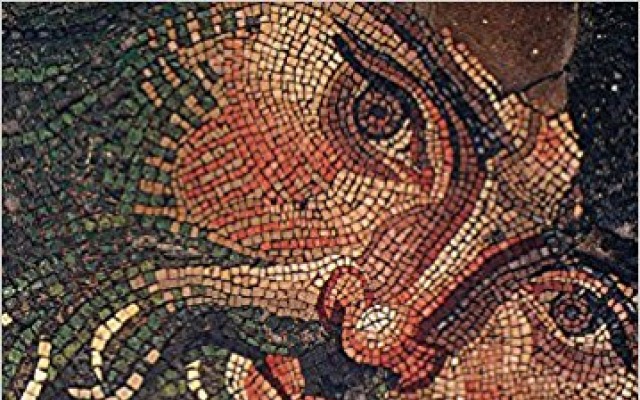Solidarity, or What is Gained in Translation

For those translators and lovers of translation who are depressed by the rhetoric of loss and distortion that continues to characterize popular translation criticism in the West—a legacy of Romanticism with its cult of original genius—just take a look at Soviet rhetoric for something completely different. Consider this passage from Andrei Fedorov’s 1941 monograph On Literary Translation:
Translation in Soviet literature stands at an extraordinarily high level and fulfills tasks that are extraordinarily responsible. This is why analysis of examples from the work of Soviet translators and the exploration of the problems that lie before them in particular are of interest both for Soviet literature and for world literature. This is only natural as Soviet literature is international. (1941:4)
There are many reasons for this triumphant tone. On the one hand, original writing was viewed with increasing suspicion by the Soviet regime, making translation, like bardic authorship, into a less dangerous alternative to Romantic authorship (see Chapter 5 in Baer 2015). On the other hand, the regime recognized translation to be essential in fostering mutual understanding, or solidarity, among peoples, both within the multi-lingual, multi-ethnic Soviet Union and outside it. In other words, by promoting translation, the regime enhanced its reputation as the capital of the international communist movement. And while in the US translations make up only 3% of all published works, the Soviets published a great number of foreign works—often in huge print runs. The statistics were staggering, as the writer Aleksandr Fadeev boasted in a 1949 speech “On the Cause of World Peace”:
According to data from the All-Union Book Chamber, from 1917-1948, that is, for the entire existence of the new Russia, the works of 206 American writers (I am speaking here only of literature) were translated into Russian and other languages of the Soviet Union. Overall, 2,245 works of American literature were published in a general circulation of 39,709,000 copies. Among them, Jack London’s works were published in a print run of 11,164,000, in 29 of the languages of the peoples of the Soviet Union, Upton Sinclair’s, in a print run of 2,951,000, in 15 languages, [Ernest] Thompson Seton’s, in a print run of 2,268,000, in 21 languages, Mark Twain’s in a print run of 3,464,000, in 22 languages, O’Henry’s, in a print run of 1,618,000, Theodore Dreiser’s, in a print run of 501,000, James Fenimore Cooper’s, in a print run of 452,000, [Erskine] Caldwell’s, in a print run of 290,000, Sinclair Lewis’s, in a print run of 276,000, Edgar Allen Poe’s, in a print run of 204,000, Washington Irving’s, in a print run of 276,000, Longfellow’s, in a print run of 195,000, Steinbeck’s, in a print run of 375,000, Walt Whitman, in a print run of 104,000, of Hemingway’s, in a print run of 130,000, and Langston Hughes’s, in a print run of 119,000. Such is the interest of the Russian people in American literature, which has offered and continues to offer today a reflection of the life of the American people. (Fadeev 2013:84)
This focus on translation occurred very soon after the Bolsheviks came to power, as evident in the founding of the publishing house Vsemirnaia Literatura, or World Literature, in 1918, in the midst of the country’s Civil War. Despite the difficult conditions in which it was founded, the publishing house had lofty ambitions. As the publishing house’s director, Aleksandr Tikhonov, stated in his annual report of 1923:
In the first two years, the Publishing House worked on a grand scale: 350 translators and editors; yearly up to 2500–3000 printing sheets [more than 100 million characters] were accepted. Such an impressive enterprise was necessary on the one hand because it had to fulfil its obligations to the People’s Commissariat of Education: according to the agreement, 300 volumes had to be published every year (qtd. in Tyulenev 2016:12).
Moreover, the scale of the enterprise produced some of the earliest systematic reflection on translation: Kornei Chukovskii and Nikolai Gumilev’s 1919 Principles of Literary Translation, and the expanded 1920 edition, with Dmitrii Bogdanovich. By 1941 a total of five Russian monographs had appeared on the theory and practice of translation, as well as a good number of scholarly articles; there was nothing comparable in the West, where such systematic reflection began only after the Second World War.
And there was more than just propaganda behind these impressive figures. Translated literature was enormously popular among Soviet readers. Indeed, Maurice Friedberg documented that translated literature was actually preferred by Soviet college and university students in the post-Stalin period (Friedberg 1977:71). With heavy restrictions placed on travel abroad and even on interaction with foreign tourists, one cannot underestimate the role of translated literature in providing Soviet readers with a link to foreign lands and peoples, a window onto the outside world. As Friedberg notes, “It is by no means uncommon in the USSR for translated Western literature—and particularly for rarely reprinted old favorites—to sell out very quickly in the bookstores and soon become available only in the black market” (1977:275). A history of censorship only enhanced the reputation of foreign authors, so when a Russian collection of Baudelaire appeared in 1966, following several decades in which the French poet was considered persona non grata by the regime, the edition of 50,000 sold out in a matter of hours (Wanner 1996:5).
The unique role of translation in fostering cross-cultural solidarity, which was officially exploited by the Soviet regime, and which existed throughout the Soviet period alongside increasing xenophobia and censorship, had its roots in the late eighteenth century. The fact that Russia’s increasingly oppositional intelligentsia was well-versed in Western European languages—most in the early nineteenth century, fluent in French—made them well suited to translation and, as readers, were able to compare the translation against the original. The most oppositional segment of Russia’s intelligentsia consisted of Westernizers, who sought answers to Russia’s social and political problems in Western European thinkers, beginning in the late eighteenth century when freemasonry and Pietism swept through the Russian upper-classes, ushering in a number of translations of the key texts of those movements. The rise of Pietism in Russia led to the founding of the Russian Bible Society, dedicated to producing a translation of the Bible into modern Russian—with all the political implications such endeavors had in Western Europe during the Reformation. The society was shut down by order of the tsar in 1824.
In the lead-up to the failed Decembrist Revolt of 1825, Russia’s elite was fascinated by French Revolutionary poetry, which offered them a model for a civic literature, one in which the poet was actively engaged in the politics of his time. This penchant for French Revolutionary poetry would continue throughout the nineteenth century, augmented by an interest in American abolitionist poetry, which Russians put to use—in translation—in their own “freedom movement” (osvobozhdennoe dvizhenie), to end the practice of serfdom, and beyond. Consider poet Marina Tsvetaeva’s comments, made in exile on the verge of the Second World War, after reading a translation of Harriet Beecher Stowe’s Uncle Tom’s Cabin: “I’m reading now, for the first time in my life, Uncle Tom’s Cabin in its entirety. An excellent book, courageous and completely contemporary. I read Feuchtwander’s Jud Süss: also contemporary. All offenses, all injuries—they’re as old as the world” (qtd. in MacKay 2013:3).
The juxtaposition of these two works is telling, insofar as much of the abolitionist discourse was already “borrowed” from the Old Testament, with Black slaves cast in the role of the Jews in Babylon. This sacred narrative, disseminated through translations of the Bible, dignified the predicament of African Americans and promised liberation—a return to the “promised land,” understood metaphorically as emancipation or literally as a return to Africa. American abolitionist literature, in turn, found a receptive audience not only in Russia, with its tradition of serfdom, but also among the Dalit, or the former Untouchables, in India, who were inspired by it in their efforts to dismantle the caste system, testifying to the ability of translation to forge solidarity across linguistic, ethnic and religious lines (Kapoor 2004:13).
Conditions of censorship also made translation—and perhaps specifically, the translation of poetry—into a privileged site for public discussion of political issues as the responsibility for these works was, one might say, attenuated. This, in turn fostered hermeneutic practices that allowed select readers to fully unpack the oppositional content of these works and to gain membership or to reaffirm their membership in that particular community of readers. But these translations did not speak only to issues in the target culture; in other words, they were not fully localized and adapted. They retained their connection to the source culture, thus serving as a manifestation of cross-cultural solidarity. This is something translation is perhaps uniquely suited to doing but that is obscured by approaches that are either source-oriented or target-oriented. By recognizing the solidarity implicit in works of translation—the solidarity that often motivates them and that may be fostered by them—we can begin to think beyond what Kobus Marais describes as “the unsolvable paradox of locality and universality” (2014:3), seeing locality and universality no longer in terms of either/or but in terms of both/and. Adopting a complexity approach to translation, Marais argues, represents, “a philosophical stance that does not try to reduce either the one into the many or the many into the one. Rather it is a philosophy of paradox that maintains both one and many, universal and contingent, and, in the case of translation studies, source and target, self and other as constituent parts of reality” (2014:22). Solidarity lets us preserve locality and universality in an unresolved tension, making translation always greater than the sum of its parts.
This progressive aspect of translation, which is often ignored in Western writing in favor of translation as what I see as a more conservative “memorialization” (see Brodski 2007), is perhaps nowhere more evident than in the phenomenon of prison translations, which, unfortunately, had a very rich tradition in modern Russia, one that continued seamlessly into the Soviet period. I was moved by the pathos of someone locked in a cell who makes a connection with the outside world through the act of translation and, in many cases, defiantly continues to engage with the very issues that landed him behind bars. In fact, Lenin advised his father-in-law, imprisoned for his radical activities, to spend his time in prison translating as this was a useful way to spend one’s time and to learn foreign languages (Fedorov 1953:74).
Nevertheless, the tradition of prison translations was a rich one in Russia and, as I mentioned above, an interesting point of continuity between pre- and post-revolutionary Russia. The bonds of solidarity engendered through translation were made possible by an ability and a willingness to read beyond ethnic, racial and national difference, to recognize a common humanity under various forms of oppression. This kind of solidarity was especially evident in the work of the translator and publicist Mikhail Mikailov (1825-1865), who continued to translate after he was imprisoned for his radical activities—and was able to smuggle works out to prison, which were then published under a pseudonym. For those fellow-radicals who knew these translations were done by the imprisoned Mikhailov, this was an inspirational act of defiance.
One is struck in Mikhailov’s selection of texts for translation by his ability to find common cause with oppressed peoples everyone. Among the works he translated from prison were anti-abolitionist poetry by , drawing a connection between the American institution of racialized slavery and the Russian institution of serfdom. He also translated the Irish poet Thomas Moore’s Irish Melodies, inspired by the failed Irish Uprising of 1798, which was brutally suppressed by the British, suggesting a connection between Ireland’s colonial predicament and Russians’ experience of autocracy (Fateev 1969).
We have, perhaps, Modernism to blame, and the New Criticism it inspired, for the lack of attention paid to the whole question of solidarity, having removed “vulgar” political concerns from the realm of high art, especially poetry. Solidarity in the field of Translation Studies, however, is finally receiving the attention it is due in the study of the phenomenon of volunteer translation, defined as translation “conducted by people exercising their free will to perform translation work that is not remunerated, is formally organized, and is for the benefit of others” (Olohan 2014:19). For such translations, facilitated by the rise of the World Wide Web and specifically by the availability of online cloud collaborative translation platforms (see Babych et al. 2012), solidarity is both the incentive and the goal. O’Brien and Schäler (2010), for example, found in their study of 139 volunteer translators contributing to the non-profit Rosetta Foundation, “that the main incentive motivating the volunteers was the desire to support the causes to which the organization was committed” (Crespo 2015:64).
Notable attempts have been made within Translation Studies to overcome the Romantic prejudice against translation. These attempts have focused mainly on emphasizing the creative aspects of the translator’s task in order to present translation as a form of writing (Bassnett and Bush 2007; Kenney, Baer, and Tymoczko 2015). The focus on solidarity, however, is arguably an even more important contribution to this rethinking of the relationship between translation and “original” writing insofar as it is something that translation does, one could argue, better than original writing. For even when we think of writing as a dialogue with future readers and with past writers, the dialogue initiated by translation is necessarily cross-cultural, reaching across linguistic and cultural boundaries through what Gayatri Spivak has called “the most intimate act of reading” (Spivak 1993:183). To paraphrase Andrei Fedorov, this is only natural as translated literature is always already international.
Babych, Bogdan et al. 2012. “MNH-TT: a Collaborative Platform for Translator Training”, Translating and the Computer 34. Online. Online. Available HTTP: <http://www.mt-archive.info/Aslib-2012-Babych.pdf> (accessed 20 June 2014).
Baer, Brian James. 2015. Translation and the Making of Modern Russian Literature. London and New York: Bloomsbury.
Bassnett, Susan and Peter Bush. 2007. The Translator as Writer. London and New York: Continuum.
Brodski, Bella. 2007. Can these Bones Live? Translation, Survival, and Cultural Memory. Stanford: Stanford UP.
Crespo, Miguel Jimenez. 2015. “Collaborative and Volunteer Translation and Interpreting.” In Researching Translation and Interpreting, eds.
Claudia Angelelli and Brian James Baer, 58-70. London and New York: Routledge.
Fadeev, Aleksandr. 2013. “For the Cause of World Peace.” In Russian Writers on Translation. An Anthology, eds. Brian James Baer and Natalia Olshanskaya, 84. Manchester: St. Jerome.
Fateev, I. S. 1969. Mikhail Mikhailov – Revolutsioner, pisatel’, publitsist
[Mikhail Mikhailov—Revolutionary, Writer, Publicist]. Moscow: Mysl’.
Fedorov, Andrei. 1941. O khudozhestvennom perevode [On Literary Translation]. Leningrad: Khudozhestvennaia Literatura.
Fedorov, Andrei. 1953. Vvedenie v teoriiu perevoda. Leningrad: Khudozhestvennaia Literatura.
Friedberg, Maurice. 1977. A Decade of Euphoria. Western Literature in Post-Stalin Russia, 1954-1964. Bloomington and London: Indiana University Press.
Kapoor, S. D. 2004. Dalits and African Americans: A Study in Comparison. New Delhi: Kalpaz Publications.
Kenney, Françoise Massardier, Brian James Baer, and Maria Tymoczko. 2016. Translators Writing, Writing Translators. Kent: Kent State University Press.
MacKay, John. 2013. True Songs of Freedom. Uncle Tom’s Cabin in Russian Culture and Society. Madison: University of Wisconsin Press.
Marais, Kobus. 2014. Translation Theory and Development Studies. A Complexity Theory Approach. New York and London: Routledge.
O’Brien, Sharon and Reinhart Schäler. 2010. “Next Generation Translation and Localization. Users are Taking Charge.” Translating and the Computer Conference, 17-18 November 2010, London. Online. Available HTTP: < http://doras.dcu.ie/16695/1/Paper_6.pdf > (accessed 20 June 2014)
Olohan, Maeve. 2014. “Why Do You Translate? Motivation to Volunteer and TED Translation.” Perspectives: Studies in Translatology 7(1):17-33.
Spivak, Gayatri. 1993. “The Politics of Translation.” In Outside in the Teaching Machine, 179-200. New York: Routledge.
Tyulenev, Sergey. 2016. “Vsemirnaia Literatura: Intersections between Translating and Original Literary Writing.” Slavic and East European Journal 60.1 (Spring):8-21.
Wanner, Adrian. 1996. Baudelaire in Russia. Gainesville: University Press of Florida.




